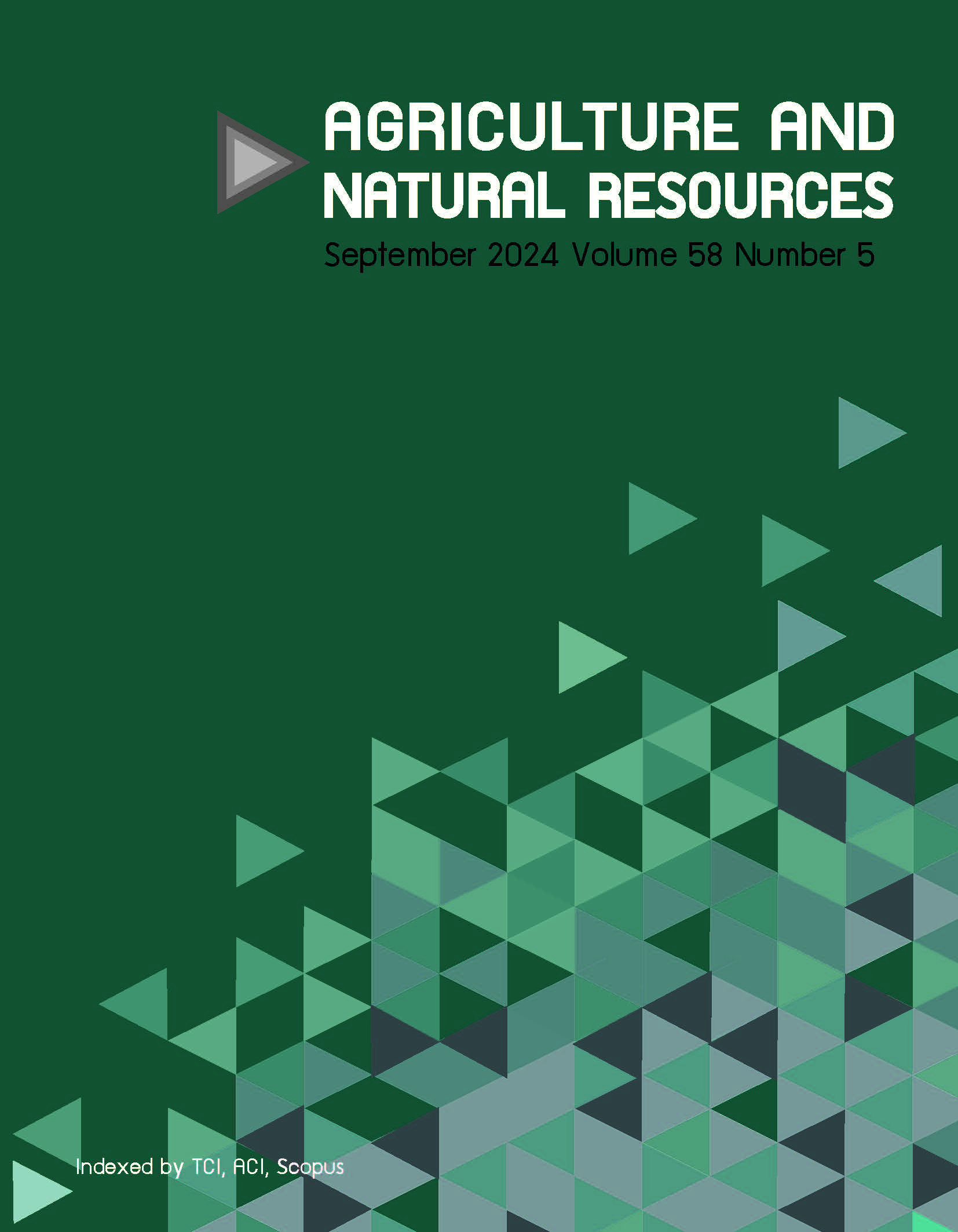Effect of alternate wetting and drying technology on growth, yield and physiological responses of glutinous rice in northeast Thailand
Keywords:
Alternate wetting and drying (AWD), Continuous flooding (CF), Glutinous rice, Growth and yield, Physiological responseAbstract
Importance of the work: Alternate wetting and drying (AWD) is a water-saving technique essential for rice cultivation under the current climatic situations where high water productivity is a concern.
Objectives: To investigate the effects of moderate AWD application and CF (continuous flooding) on the growth, yield, grain quality and physiological responses of the traditional, local Leenok and the modern, improved RD22 glutinous rice varieties.
Materials and Methods: A field study was used, with 3 × 5 m rice paddy plots and a 2 × 2
factorial randomized complete block design involving two levels of water—continuous flooding (CF) and moderate stress (AWD25)—as Factor A and two glutinous rice varieties as Factor B.
Results: Compared to CF, AWD25 had a better number of tillers, better values for all yield and yield components (number of panicles per hill, panicle length, number of grains per panicle, number of filled grains, 1,000-grain weight, yield, straw yield and harvesting index. However, AWD25 had a lower filled grain percentage but a higher broken grain percentage than CF. Compared to CF, AWD25 had greater values for the relative growth rate (RGR), specific leaf weight (SLW) and leaf area index (LAI). However, the leaf chlorophyll a content was higher under CF, whereas the carotenoid content was greater under AWD25. Leaf total nonstructural carbohydrates and grain sucrose were higher under CF, while the grain starch percentage was higher under AWD25 and Leenok had a greater accumulation of grain starch and sucrose than RD22 rice. Water use under AWD25 was 27.83% less than for CF, while the water use efficiency was 31.43% better than for CF. Combination effects existed in many responses.
Main finding: AWD25 had better growth, yield and water productivity than CF. Leenok performed better than RD22 under AWD25 than under CF.
Downloads
Published
How to Cite
Issue
Section
License
Copyright (c) 2024 This is an open access article under the CC BY-NC-ND license (http://creativecommons.org/licenses/by-nc-nd/4.0/), production and hosting by Kasetsart University Research and Development Institute on behalf of Kasetsart University.online 2452-316X print 2468-1458/Copyright © 2022. This is an open access article under the CC BY-NC-ND license (http://creativecommons.org/licenses/by-nc-nd/4.0/),
production and hosting by Kasetsart University of Research and Development Institute on behalf of Kasetsart University.





